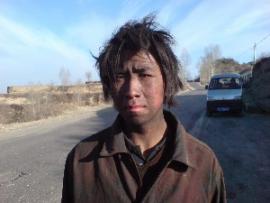Course:ECON371/UBCO2010WT1/GROUP6/Article6
'Choking in China's polluted city'
by By Emily Chang, CNN
Website - [1]
Reference: [2]
Summary
"On the road into Linfen, the cars seem to disappear into dense smog that clings to vanishing buildings." (Chang, CNN) A descriptive imagery of the level of pollution in Linfen, China. Part of the Shanxi Province in China, Linfen's pollution is currently affecting about three million people. (Worstpolluted.org) The city of Linfen is currently ranked second of one of the world most polluted places. The primary source of pollutions are from industrial emissions and vehicle emission. In Chang's article, she described some of the local stories about how the pollution affect the general population of Linfen. With a strong economical growth and the demand for energy for the factories, the local harvests and consumes a large amount of coal to provide the energy needed. There are factories that produce steel, mine for coal and many factories. The pollutions emitted from both of these commodities are directly affecting Linfen. Although the factories are creating a smog that makes it difficult for the locals to breath, however the factories and mines provide the job while fueling the economy of Linfen. Chang interviewed locals that stated about how the locals adapted to the environment and the poor air quality. It is difficult to ignore the fact that the pollution is causing 10 deaths annually in Linfen even the locals are adapting to it. With this major problem that is still occurring in Linfen, the local government and environmentalists had proposed to use the "Blue Sky, Green Water" project to assist the locals to gain access to breath-able air.
Analysis
Linfen is a growing city in China. With a specific field of workers that do not work behind a desk but in mines and factories, the economy for these workers revolves around the gathering and processing raw materials such as coal or steel. In Linfen, the economy shapes the demographics and the city. Unlike core cities such as Shanghai which is dominated mostly of white or blue collar workers, Linfen has a large population which allow business to gain access of the labor. With a strong competition for work, the average rate for the labor force is low. Linfen has over hundreds of factories and steel processing plants that is located around the city. Linfen, as the core, has a dense population that competes to find jobs as well as housing. With the population is crammed into a space, this creates a problem such as traffic congestion. With traffic congestion, the chances of cars emission is much higher. Other than traffic congestion, the idea of the city's economy revolves around raw material and processing will create a large amount of emission within the city. A cluster of factories and steel mills will create a dense air pollution that will be moved by the wind that will redirect it to nearby cities such as itself. This problem affects over 3 million residents in Linfen over the past years. With this much problem at hand, the government and officials is promoting the "Blue Sky, Green Water" project. This project's primary target is to reduce the amount of factories and steel mills which will drastically reduce the air pollution in Linfen. This method will become a positive attribute of the project. If the government cannot provide a plan for the aftermath of closing down the local source of jobs, it will create a market depreciation and the market will later fail.
Social Efficiency
The social efficiency is currently hitting rock bottom for the city of Linfen. With the factories and mills growing substantially over the past years, it has developed itself as the local market. This expansion of factories and mills created an abatement cost so large that it will become hard to plan and contain in the future. One of the biggest problem of a city that depends on the physical labor is the transportation system is not developed well enough to contain the large amount of cars travelling everyday. The other biggest problem which is the fact that the urban planning or structure of the city. With most of the mines and factories that are located on the outskirts of the business district of the city, the problem of pollution strongly affect the city though the wind redirection. While the government and officials had enough of the air pollution in Linfen, they proposed a project that is called "Blue Sky, Green Water" to prevent the expansion of factories and mills in Linfen. In fact, the planners have decided to reduce the amount of the factories and mills in Linfen. This will cause the market to fail in Linfen since it is dominated by factories and mills. It is a difficult to make a fair decision of how to treat the the problem in Linfen. With the "Blue Sky, Green Water" project, it will become hard to slowly changing the economical stage from industrialized city to a much more skill base work force such as blue or white collars.
Prof's Comments
I find your analysis confusing to read. It sounds like Linfen is cleaning up. Why? Is this coming from the Chinese government, or the Linfen government? Is the government that is taking action increasing the overall welfare, or is it a net decline? Remember to be careful with jobs. Unless the people cannot move, job loss is not a cost. Given that people seem to be moving all over China, I think that this is true.
